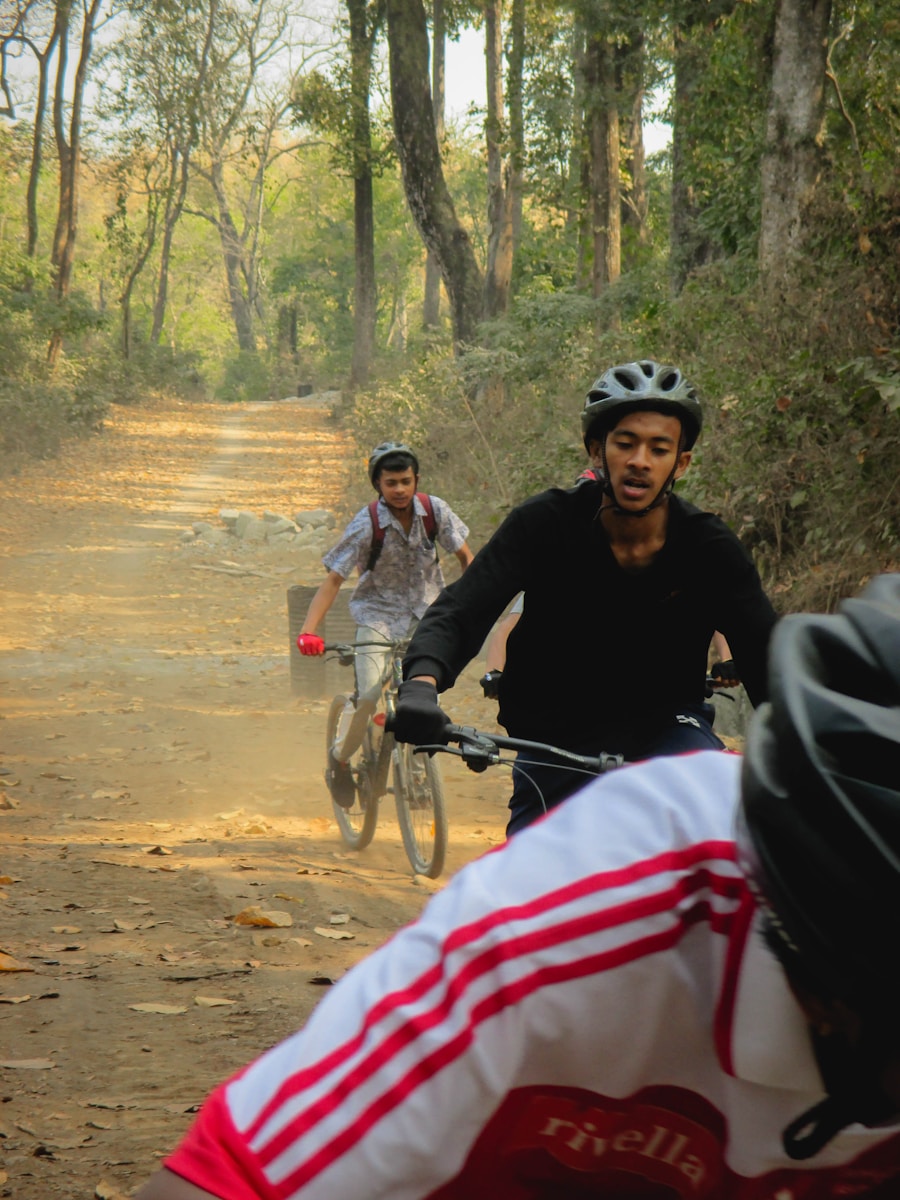The DC metropolitan area offers some of the country’s most accessible gravel cycling opportunities, with centuries-old roads, scenic byways, and rural landscapes just minutes from urban centers. While many cyclists stick to familiar routes close to home, Virginia’s diverse geography holds incredible gravel cycling treasures within a short drive of the Capital Beltway. From the rolling hills of the Piedmont to the dramatic vistas of the Blue Ridge, this guide reveals seven exceptional gravel destinations that showcase Virginia’s natural beauty while supporting local communities and sustainable tourism.
The Appeal of Gravel Cycling Tourism
Why Gravel? Why Virginia?
Gravel cycling has exploded in popularity because it offers the best of both road and mountain biking—the speed and efficiency of road cycling with the adventure and scenery of off-road exploration. Virginia’s extensive network of unpaved roads, many dating to colonial times, provides unparalleled access to landscapes and communities that remain largely untouched by modern development.
Virginia’s Gravel Advantages:
- Historical significance: Ride roads used by Civil War armies and colonial settlers
- Diverse terrain: From coastal plains to mountain ridges within hours of each other
- Rural communities: Support local businesses and experience authentic small-town hospitality
- Year-round access: Mild climate allows for cycling in all seasons
- Economic impact: Cycling tourism supports conservation and rural economic development
Route 1: Shenandoah Valley – Page County’s Peaceful Hollows
Distance from DC: 75 minutes | Total Route: 45 miles | Difficulty: Moderate
Page County offers some of Virginia’s most spectacular mountain views combined with well-maintained gravel roads that wind through peaceful agricultural valleys. This route showcases the Shenandoah Valley’s pastoral beauty while providing challenging climbs and exhilarating descents.
Route Highlights:
- Skyline Drive views: Glimpses of Shenandoah National Park from multiple vantage points
- Luray Caverns vicinity: Ride past one of Virginia’s most famous natural attractions
- Apple orchards: Seasonal beauty and farm stand opportunities
- Covered bridges: Historic structures over mountain streams
- Limestone geology: Unique karst landscape features
Starting Point: Luray Visitor Center (18 Campbell St, Luray, VA 22835)
Local Support:
- Element Outfitters (Luray): Bike rental, repair, and local route advice
- Gathering Grounds Patisserie & Café: Pre-ride coffee and post-ride meals
- Best Western Intown of Luray: Bike-friendly accommodations
Route 2: Rappahannock County – Civil War Roads and Vineyards
Distance from DC: 60 minutes | Total Route: 52 miles | Difficulty: Challenging
Rappahannock County combines challenging terrain with rich Civil War history and Virginia’s burgeoning wine industry. This route follows roads used during the Civil War while showcasing the county’s commitment to conservation and sustainable agriculture.
Route Highlights:
- Brandy Station Battlefield: Site of the largest cavalry battle in North America
- Virginia vineyards: Rolling hills covered with grapevines and scenic wineries
- Hazel River: Multiple creek crossings and riparian forest
- Historic stone bridges: 19th-century engineering still in daily use
Starting Point: Culpeper Visitor Center (109 S Commerce St, Culpeper, VA 22701)
Local Support:
- Gray Ghost Vineyards: Post-ride wine tasting and farm-to-table dining
- Culpeper Bike & Tri: Full-service bike shop and rental
- Brandy Station Foundation: Battlefield preservation and historical interpretation
Route 3: Albemarle County – Jefferson’s Countryside
Distance from DC: 90 minutes | Total Route: 47 miles | Difficulty: Challenging
Albemarle County, home to Thomas Jefferson’s Monticello and the University of Virginia, offers challenging gravel cycling through Virginia’s most historically significant landscape. The rolling Piedmont terrain provides constant challenges while showcasing the area’s natural beauty and architectural heritage.
Route Highlights:
- Monticello vicinity: Views of Jefferson’s architectural masterpiece
- Virginia vineyards: Some of the state’s finest wineries
- James River tributaries: Multiple creek crossings and water features
- Historic estates: 18th and 19th-century plantation houses
Starting Point: Monticello Visitor Center (931 Thomas Jefferson Pkwy, Charlottesville, VA 22902)
Local Support:
- Blue Wheel Bicycles: Charlottesville’s premier bike shop
- Keswick Hall: Luxury accommodations with cycling packages
- Trump Winery: Scenic vineyard with tasting room
Route 4: Madison County – Blue Ridge Foothills
Distance from DC: 85 minutes | Total Route: 39 miles | Difficulty: Challenging
Madison County offers some of Virginia’s most challenging gravel cycling, with steep climbs into the Blue Ridge foothills and spectacular mountain views. This route is perfect for experienced gravel cyclists seeking technical challenges and breathtaking scenery.
Route Highlights:
- Shenandoah National Park boundary: Ride along the edge of protected wilderness
- Mountain streams: Cold-water trout streams and waterfalls
- Historic hollows: Remote valleys with century-old settlements
- Wildlife viewing: Frequent deer, turkey, and bird sightings
Starting Point: Madison Visitor Center (101 N Main St, Madison, VA 22727)
Local Support:
- Ducard Vineyards: Family-owned winery with mountain views
- The Hummingbird Inn: Historic bed & breakfast in Madison
- Shenandoah National Park: Additional recreational opportunities
Route 5: King George County – Northern Neck Rivers
Distance from DC: 75 minutes | Total Route: 43 miles | Difficulty: Easy to Moderate
King George County in Virginia’s Northern Neck offers gentler gravel cycling through tidewater landscapes, historic plantations, and riverside communities. This route provides a different perspective on Virginia cycling, with flat terrain and river views.
Route Highlights:
- Potomac River views: Scenic overlooks of the tidal Potomac
- Historic plantations: Colonial-era estates and archaeological sites
- Tidewater ecology: Marshes, creeks, and coastal plain forests
- Maritime heritage: Working watermen and boat builders
Starting Point: Caledon State Park (11617 Caledon Rd, King George, VA 22485)
Local Support:
- Caledon State Park: Camping, trails, and visitor center
- George Washington Birthplace: National monument and historical interpretation
- Westmoreland State Park: Additional camping and recreational opportunities
Economic Impact and Community Benefits
Supporting Rural Virginia
Gravel cycling tourism provides significant economic benefits to rural Virginia communities:
Direct Economic Impact:
- Accommodations: $127 average per night spent by cycling tourists
- Food and beverage: $45 average daily spending at local restaurants
- Retail: $23 average spending on local goods and cycling supplies
- Services: $18 average spending on bike maintenance and guides
Total Annual Impact: Gravel cycling contributes over $31 million annually to Virginia’s rural economy, supporting approximately 420 jobs in tourism, hospitality, and related sectors.
Conservation Through Tourism
Cycling tourism creates economic incentives for land conservation:
- Private land protection: Landowners maintaining gravel roads and scenic easements
- Historic preservation: Tourism revenue funding restoration of historic structures
- Agricultural sustainability: Farm tourism supporting traditional agricultural practices
- Environmental stewardship: Communities protecting natural resources that attract visitors
Planning Your Gravel Adventure
Essential Gear and Preparation
Bike Setup:
- Tire selection: 35-45mm tires with puncture protection
- Gearing: Wide-range cassette for Virginia’s varied terrain
- Navigation: GPS device or smartphone with offline maps
- Safety equipment: Lights, reflective clothing, and emergency supplies
Seasonal Considerations:
- Spring (March-May): Mild temperatures, blooming wildflowers, occasional mud
- Summer (June-August): Hot and humid, early morning starts recommended
- Fall (September-November): Perfect temperatures, fall foliage, harvest season
- Winter (December-February): Cool but rideable, fewer crowds, hunting season considerations
Safety and Etiquette
Road Sharing:
- Farm vehicles: Give way to agricultural equipment and livestock
- Private property: Stay on public roads and respect property boundaries
- Gates and cattle guards: Always close gates and exercise caution
- Local traffic: Be courteous to residents and other road users
Environmental Stewardship:
- Leave No Trace: Pack out all trash and stay on designated routes
- Water sources: Don’t contaminate streams or water supplies
- Wildlife: Observe from distance and don’t disturb natural habitats
- Cultural sites: Respect historical markers and archaeological sites
Building Community Through Cycling
Local Partnerships
Successful gravel cycling tourism depends on strong partnerships between cyclists and rural communities:
- Tourism boards: Collaborating on route development and promotion
- Local businesses: Creating bike-friendly services and accommodations
- Conservation groups: Supporting land protection and stewardship
- Historical societies: Developing interpretive materials and cultural programming
Annual Events and Festivals
Many Virginia communities now host gravel cycling events that celebrate local culture:
- Shenandoah Mountain 100: Challenging mountain gravel race
- Rappahannock Roubaix: Spring classic through hunt country
- Virginia Capital Trail Festival: Family-friendly event on paved trail
- Local charity rides: Community fundraising events throughout the year
The Future of Virginia Gravel Cycling
Infrastructure Development
Virginia is investing in cycling infrastructure that benefits both residents and tourists:
- Virginia Capital Trail: 52-mile paved trail from Richmond to Williamsburg
- High Bridge Trail: 31-mile rail-trail through Southside Virginia
- Regional trail connections: Linking communities with safe cycling corridors
- Gravel road maintenance: Improved standards for recreational road maintenance
Technology Integration
Modern technology enhances the gravel cycling experience:
- Mobile apps: Route navigation with real-time conditions
- Digital interpretation: QR codes linking to historical information
- Social platforms: Community building and route sharing
- Safety technology: Emergency location services and crash detection
Call to Action: Explore Responsibly
Virginia’s gravel cycling opportunities represent more than just recreational activities—they’re pathways to understanding our state’s history, supporting rural communities, and protecting natural landscapes for future generations. Every mile you ride contributes to the economic vitality and conservation of these special places.
Your Next Adventure
Choose one of these routes for your next weekend adventure:
- Plan ahead: Check weather conditions and route status
- Support locals: Eat, shop, and stay in the communities you visit
- Share responsibly: Promote sustainable tourism practices
- Give back: Volunteer for trail maintenance or conservation projects
- Advocate: Support policies that protect rural landscapes and cycling access
Connect with Cycling Unbound Foundation
Join our efforts to promote sustainable cycling tourism and support rural Virginia communities:
- Route updates: Current conditions and new route discoveries
- Community events: Group rides and conservation volunteer opportunities
- Advocacy: Supporting policies that protect cycling access and rural landscapes
- Education: Best practices for sustainable cycling tourism
Ready to explore Virginia’s gravel gems? Contact us at gravel@cyclingunbound.org for route maps, current conditions, and connection with local cycling communities.
Cycling Unbound Foundation is committed to promoting sustainable cycling tourism that benefits rural communities and protects Virginia’s natural and cultural heritage. Together, we can ensure these incredible gravel cycling opportunities remain available for future generations while supporting the communities that make them possible.




Just rode the Page County route last weekend – absolutely stunning! One tip: bring extra water bottles. The climb up to the Skyline Drive views is no joke, especially in summer. Also, the apple cider donuts at the orchard near mile 32 are worth the detour!
This guide is gold! As a gravel tour operator, I can confirm these routes showcase the best of Virginia. For anyone planning the Rappahannock route, I’d recommend starting early – not just for the heat, but to catch the morning mist over the vineyards. Also, many of the wineries offer cyclist-friendly tastings with food pairings. Just remember to arrange transportation if you’re sampling!